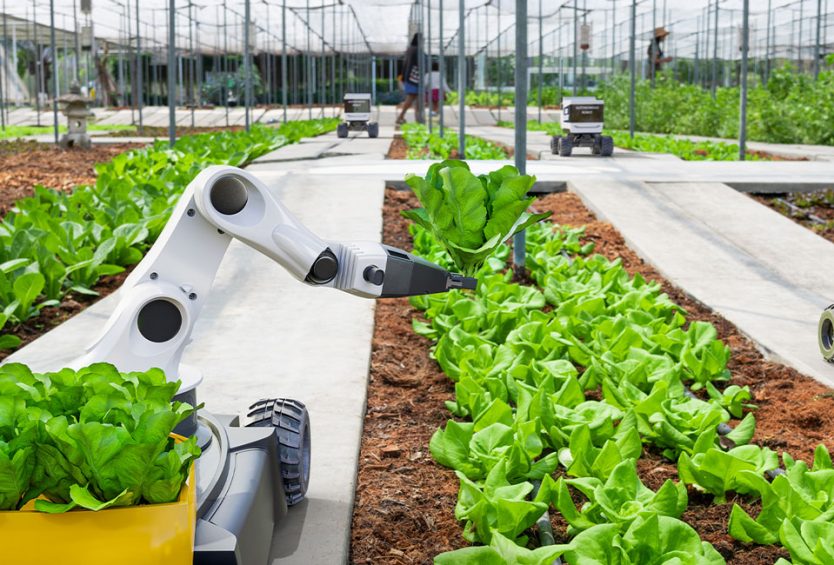The technical infrastructure for electronic payments has been improved with a rapid growth rate such as POS machines are already present at most merchant establishments. These are favorable factors that help Vietnam accelerate the transition to a cash-restricted economy.
According to the Report of the State Bank, in 2021 non-cash transactions have increased in both quantity and value, specifically the number increased by 30% and the transaction value increased by 18%. Currently, Vietnam has more than 150 companies operating in the field of financial technology (fintech), mainly electronic payments, accounting for more than 40%.
Vietnam is a potential market due to its high level of internet coverage while the cost of using the internet is low, and the proportion of people using smart devices increases rapidly. Supermarkets, shopping malls and modern distribution channels all allow consumers to make cashless payments when making purchases in a variety of forms: payment cards, e-wallets, electronic payment gateways, mobile payments,…
Cash payments are gradually being replaced
Cash payments are becoming less popular and are declining in most countries around the world. Instead, cashless payment is an inevitable trend, as well as a driving force in the development of the global trade economy.
In fact, cash-dominated economies tend to slow down and miss significant opportunities in the process of global commercialization. In contrast, economies that actively shift to electronic payments achieve greater success and take advantage of simplifying the payment process and managing macro currencies.
Among developed economies, Sweden and South Korea are leading the transition to cashless economies. According to 2019 statistics from Statista, cash transactions in Sweden accounted for only about 12.8% (1), and that of South Korea was 17.4% (2) of the total value of payments.
The result of a cashless economy is growing trade, and plummeted fraud. For developing economies, digital payment is an effective tool that simplifies funding for important economic entities, such as farmers and individual business households.
In Bangladesh, the BKash app that allows mobile money transfers has boosted the growth of the SMEs. MyAgro application is widely applied in Senegal, Mali and Tanzania has helped farmers access funding more easily and participate in the agricultural value chain effectively.
Benefits of electronic payments
The development of e-commerce can promote the use of electronic payments and vice versa, electronic payments bring benefits to e-commerce businesses, boosting sales.
The electronic payment system allows the creation of a financial database of businesses, customers, and citizens from which financial institutions or non-financial institutions can use the information to build credit scores to approve loans. Financial institutions can also use this data to provide private asset management and insurance services.
For businesses, electronic payments help save time and costs managing cash transactions such as staff costs, monitoring costs, cash protection costs… For the government, electronic payment system can assist the government in designing and implementing appropriate and effective monetary policies. Electronic payments help reduce corruption and increase the efficiency of tax collection through transparent monitoring of all financial transactions.
What countries around the world are doing to boost cashless economies?
In September 2016, G20 heads of state and government approved the High-Level Principles on Digital Finance (HLP), thereby recognizing digital payment capacity in helping people access to financial services. G20 countries are committed to infrastructure investment, improvements in policies on digital finance in general, and digital payments in particular to make faster progress, namely:
- In Singapore, cashless payments took a big step forward in 2017 with the introduction of PayNow, a national real-time payment platform.
- Sweden has implemented a series of policies to encourage cashless payments, aiming to reduce the number of ATMs across the country by promoting e-KYC and real-time payments. The reduction in cash payments has a positive impact on the increase in the amount of tax collected by the state, for example, value-added tax revenues increased by nearly 30% within 5 years.
- The Reserve Bank of Australia has enacted policies that help reduce the cost of digital payments, for example, limiting remittance fees and placing a card surcharge ceiling for small businesses. These actions have significantly reduced seller payment costs, estimated at US$11 billion, and increased the growth rate of card transactions by about 8% per year.
- Many initiatives are being implemented in Africa. Ghana, Tanzania and Mali aim to improve farmers’ access to financial services. Rwanda and Kenya aim to become cashless economies by 2024.

The status of electronic payments in Vietnam
Since the outbreak of the epidemic, the shopping and payment habits of Vietnamese consumers have changed dramatically as people wish for safer, more convenient shopping experiences, avoiding risks in transactions and property losses. According to Visa statistics (2020), Vietnamese spend 3.1 hours a day online, but during social distancing, that number has skyrocketed to 4.2 hours a day at its peak.
This reinforces statistics from Visa’s research showing that 85% of consumers are using e-commerce apps on their smartphones to pay for goods and services at least once a week, and 44% have started shopping through social media channels for the first time since the pandemic.
With the booming demand for e-commerce, the trend of e-payments is also growing and more companies are embracing the digital form. The willingness to switch is proof of how the effort to invest in new technology has been appreciated by consumers, and how they believe in the convenience and security that cashless payments offer.
4 popular forms of electronic payment in Vietnam
1. Electronic payment by bank card
This is the first and most featured form of electronic payment in the electronic payment market. The rate of payments in this form now accounts for 90% of the total rate of electronic payments.
2. Payment via payment gateway
This form of payment mostly appears on e-commerce sites. The consumer chooses the suitable form and performs according to the instructions to complete the transaction.
3. E-wallet payment
According to statistics, 85% of Vietnamese consumers own at least one e-wallet or payment application, of which more than 42% of consumers use payments via mobile devices. Most e-wallets are linked to bank accounts, e-commerce applications to expand the customer ecosystem and increase the user experience.
4. Mobile payments
On March 9, 2021, the Prime Minister signed Decision 316/QD-TTg on approving the pilot implementation of using telecommunications accounts (Mobile) to pay for goods and services. Mobile money is aimed at customers who are people in remote areas who do not have bank accounts or developed internet infrastructure. Mobile Money provides payment services to customers through accounts associated with the user’s phone number and is managed by the telecommunications service provider, Viettel Group.
Analysis of some key barriers
Some of the main barriers that Vietnam faces when switching to electronic payments include:
- Cash habits and maturity in the application of high technology of Vietnamese consumers are still low, with an obvious divergence by age and urban & rural geography.
- The rate of bank branch penetration is low with 3.4 bank branches per 100,000 inhabitants, much lower than that of similar economies, therefore, the distribution of benefits based on traditional bank branches is not feasible in rural areas. This also limits the widespread promotion of bank accounts to the public.
- The rate of government welfare payments through cashless methods is still low compared to similar economies, making it unlikely to bring about a change in people’s behavior to encourage the adoption of electronic payment methods.
- Customer identification (KYC) has not been widely implemented due to the lack of standardized evidence for checks and identifications before customers open accounts. This issue is now one of the top concerns of banks and financial institutions today.
- Lack of digitization and information link supporting condition assessment to identify payments (subsidy payments, receipt payments, etc.). This leads to difficulties in disbursing loans, thus affecting the use of electronic payments as a form of receiving and managing loans. At the same time, the regulations on the credit process are rigid, not yet creating exceptions to support people with special needs such as farmers, the poor, the elderly, the disabled, and women. Although there are supporting policies, the implementation is still difficult due to the authenticity of information and credit assessment of beneficiaries.
Some recommendations for the government and state management agencies to promote the development of electronic payments in Vietnam
Establish appropriate incentives
Incentives through a reduction in the cost of digital payments, the imposition of cash processing fees, or the regulation of cash payment thresholds in certain cases. Currently, many commercial banks of Vietnam are free to transfer money through mobile applications or some legal regulations require payment of invoices over 20 million in the form of wire transfers. Companies providing intermediary payment applications such as Momo, Airpay, Alipay, ZaloPay,… join the competition to attract users to their e-wallets by offering free transfers, offering incentives including cashbacks, free vouchers, and other forms of cash rewards.
Encourage competition and ensure a level playing field
Competition drives price optimization, brings more benefits to consumers, and encourages innovation, helping to offset the high costs of electronic payments. Governments may seek to actively support innovation. For example, the UK Government reduces research and development taxes and has launched a number of initiatives related to tax incentives for investors in start-ups. At the same time, the UK government invests in payment center infrastructure, simplifies regulatory corridors, and creates mechanisms for high-tech financial companies (fintech) to be connected to the payment system. Some countries encourage competition by encouraging or allowing the creation of privately -owned payment rails. This has long been the case in the U.S., where The Clearing House operates a number of privately-owned payment systems integrated with federally-owned payment systems.
Provide supporting infrastructure
Infrastructure is a key element of the cashless payment model including infrastructure for the Internet, mobile, payment technology, security and the power grid. Governments can both make public investments such as in building, perfecting and upgrading the national payment infrastructure (Interbank Electronic Payments; Electronic clearing; card switching) while encouraging investment from the private sector to jointly invest. Currently, some countries have transferred responsibility for payment infrastructure from central banks to private companies or banking corporations. For example, the UK express payment service, an initiative aimed at reducing payment times between bank accounts, is run by privately owned Vocalink. In 2018, a group of Australian financial institutions and the Reserve Bank of Australia launched a new Payment Platform, which is based on ISO 20022 messaging formats and allows consumers, businesses and government agencies to make real-time payments between accounts.
Research new payment technologies and methods
For example, QR code payment, secure and fast payment thanks to tokenization, mobile payment, contactless payment (NFC),…
Streamline and enforce regulations
The government needs to have clear goals and agendas of action to strengthen confidence in electronic payments. Initiatives such as dispute resolution mechanisms, licensing procedures and competitive tariffs are factors that are expected to be highly effective in promoting the adoption of non-cash solutions.
Cooperate with the private sector
Policymakers should seek to work with stakeholders to drive innovation. Many all over the world are doing this. Thai state agencies have joined forces with the private sector to launch the National Master Plan on Electronic Payments. The Plan’s PromptPay initiative allows interbank money transfers using mobile phones and has helped more than 2 million sellers sign up for QR code payments. In Europe, the cashless Polish Credit Fund provides small and medium-sized retail businesses with terminals at the point of sale and subsidizes them to make card payments of low value, otherwise, they may not be cost-effective. Russia’s Sberbank, with a 55% market share, has recruited 10,000 people to meet and greet at its branches to provide information and encourage adoption.
The Government of Vietnam has shown interest, set clear goals to boost the economy, under the support of cashless payments. On October 28, 2021, the Prime Minister approved the project to develop cashless payments in Vietnam from the period of 2021 to 2025.
The overall objective of the project is to create a positive change in cashless payments in the economy with high growth, making the use of cashless payments in society a habit of people in urban areas, step by step development in rural and remote areas; reduce social costs associated with cash.
Reference sources:
(1) Statista. 2020 Cash use in Sweden
(2) Statista. 2020 South Korea Share of cash in total transaction
(3) IFC & MasterCard. 2018 Digital Financial Service for Agriculture Handbook
(4) Visa. 2021 Survey spots momentum for cashless payments
(5) BCG. 2019 Cashless payments help economies grow
(6) World Bank. 2019 Digital Payment – A Dream Or Reality For Vietnamese In Rural And Remote Areas



